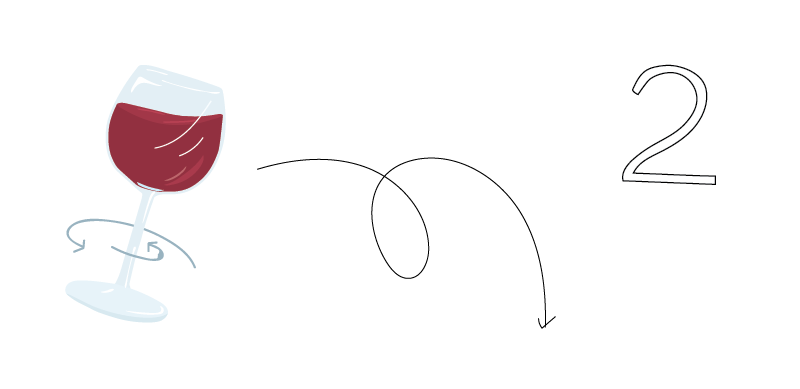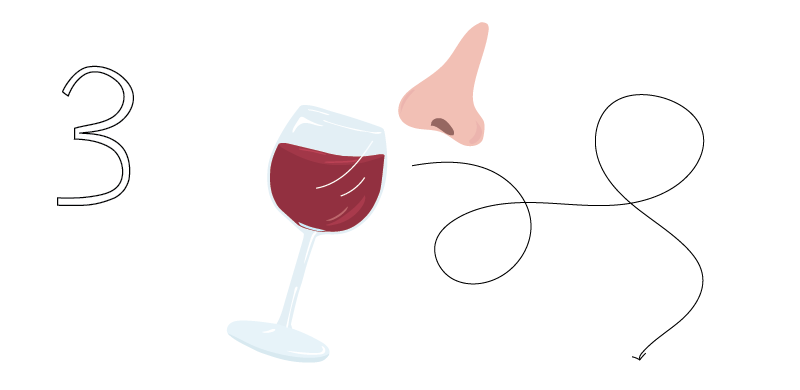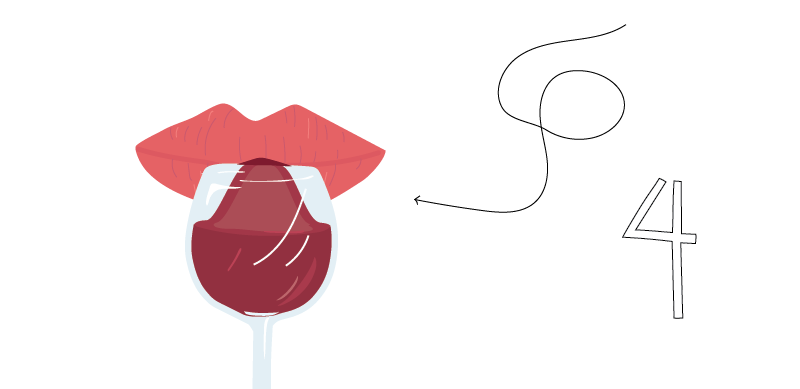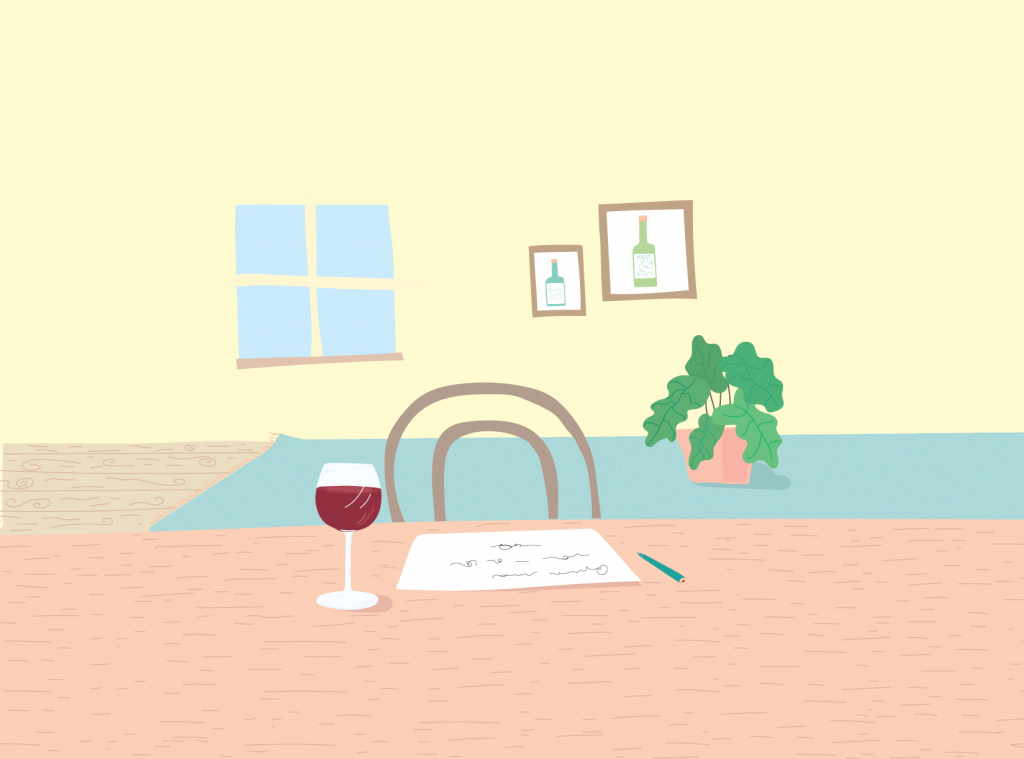Drinking a glass of wine is usually associated with moments of pleasure and special memories. For those who enjoy it, this is a enriching experience, whether we are alone, with others, having a meal, or at the end of the day.
With time, focus and concentration, it’s easy to enhance the experience of tasting wine, improving and training your palate and your memory. Wherever you are.
Find yourself somewhere comfortable, if it’s free of odours with good light it will help you detect the wine’s different aromas and colours. The glass should be plain, transparent, colourless and the most suitable for the type of wine you are trying.
Keep a notebook or sheet of paper close to take notes.
FIRST STEP: OBSERVATION

Start by observing the wine. Tilt the glass on a white surface and try to identify the wine’s colour, limpidity and effervescence.
Colour: When they are younger, red wines have deeper colours with bluish nuances. With age, they acquire more brownish tones.
In general, deeper colours in white wines mean they are sweeter.
The colours of rosé wines range from orange to red.
Clarity: The wine should be clear and bright.
Sometimes reds have a deposit. Don’t worry, it’s the natural result of separation over time.
SECOND STEP: RELEASING THE AROMAS

Sense the wine’s aromas for a first time. Then, swirl the wine in the glass so that, when it comes into contact with oxygen, new aromas are released.
THIRD STEP: IDENTIFYING THE AROMAS

Now, bring the glass to your nose, tilt it slightly and inhale. Find the aromas that are familiar to you.
The wine’s aromas are classified by analogy to other aromas we have in our sensorial memory. They can be fruitier or more floral and are divided into primary, secondary and tertiary aromas.
FORTH STEP: PALATE

Time to taste the wine. While drinking it, try swirling it around your mouth, aerating the wine, releasing all the flavours. Exhale through your nose and look for characteristics like sweet, acidic, salty, bitter, body, balance and persistence.
Body: the wine’s body is perceptible through its tannins, alcohol, glycerol and sugars.
Balance: the combination of four elementary flavours should be pleasant for the wine to be balanced. In white wines, the balance means harmony between sweet and acidic, while, in the reds, it comes from a mix of bitterness and astringency.
Persistence: how long the different sensations last dictates the wine’s persistence. The longer they take to disappear, the more persistent it is.
